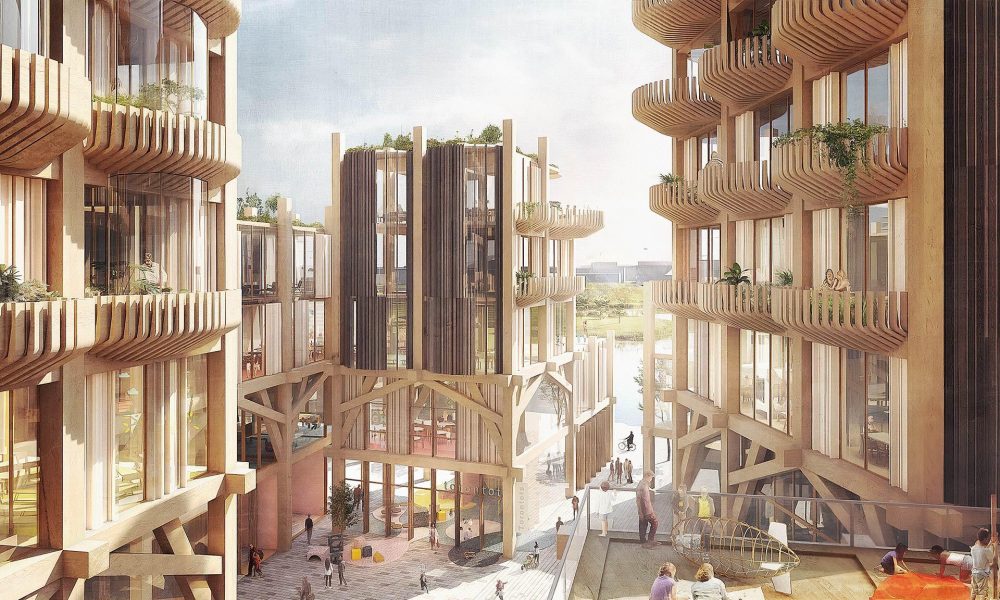

Přejít k obsahu | Přejít k hlavnímu menu | Přejít k vyhledávání

Google wants (using its subsidiary Sidewalk Labs) to demonstrate that modern urbanism cannot do without technology. That “cities of the future” are already ready. The project is a bit salient for the whole area of intelligent technology. There are two kinds of time. One is the linear (and perhaps even
Google wants (using its subsidiary Sidewalk Labs) to demonstrate that modern urbanism cannot do without technology. That “cities of the future” are already ready.
The project is a bit salient for the whole area of intelligent technology. There are two kinds of time. One is the linear (and perhaps even more exponential) one that drives forward the development of technology. Every day, the frontiers of the impossible are shifted within it, innovative products are created every week. The Internet of Things, Industry 4.0, Artificial Intelligence, High Performance Computing, and Analysis of the so-called “Big Data” are not marketing proclamations but the basic ingredients of every day. The second time has completely different patterns. It is a time when political decisions and processes cycle. “Smart” technology in the cities here is a fairy tale for the voters, but in real life, things are actually shifting to a snail’s walking – not even straight ahead. And so it becomes that a hypermodern town builds a firm, not a state. As is the case with the now-famous Toronto Sidewall project, which Google has launched.
Google wants (using its subsidiary Sidewalk Labs) to demonstrate that modern urbanism cannot do without technology. That “cities of the future” are already ready. And on the shores of Lake Ontario, the unused industrial area is transformed into a state-of-the-art district that, for example, allows people to live in a healthy, green environment – and, on the other hand, provides city supplies or garbage disposal through an “invisible” network of underground tunnels.

If you want to read the company’s two-page design headed by Daniel Doctoroff, former New York City Mayor Michael Bloomberg, see https://sidewalktoronto.ca/, in which the vision of the future city is described.
“A new type of space is emerging on the eastern embankment to combine trends in urban design with state-of-the-art digital technologies. Our goal is to solve the biggest problems of today’s cities – using meaningful energy use, affordable housing and sustainable transport,” says the preamble of the project.
What should the Toronto Sidewalk solve specifically? For example, there will be no private cars in town. But only autonomous vehicles that will attract those interested in riding at each corner. The streets will be optimized for pedestrians and cyclists. Semaphores are not just traffic lights; they can also monitor the noise or air pollution. Waste will not be exported on the day the waste company will have a scheduled date, but whenever it is fulfilled. Garbage bins and waste bins will signal themselves. Likewise, dirty benches themselves summon cleaners.
Apartments are designed to be so that they can be easily rebuilt to small businesses or start-ups. The town has floating parks, cinema on the lake or robotic ferries. With the wind it will be ready to pull up windbreaks, the rain to change the awning. Snow on the sidewalk takes care of heating.

“We, of course, welcome such projects because they can introduce the technology in practice, which is paradoxically the biggest brake in our field. We see it every day in the Czech Republic, which has, on the one hand, respected engineering and IT firms, on the other hand, it is unable to release technology into cities. We have talked about it for the last eight years, showing what we have in our hands at the conferences, but we are lacking in the capacity of representatives of governments, cities, municipalities and local governments. One example for all? Today, we can replace a regular lighting column for the intelligent one. We know it will save 40% of energy costs. Simply by lighting exactly when it’s needed. But then it can bring a number of other benefits – to monitor transport, to be a hydro meteorological station, a Wi-Fi network router, to churning out data. We are all developing and producing in the Czech Republic, where everyone can come and see for themselves. It simply makes sense. Paradoxically, at conferences we applaud, but real projects are like saffron,” says Jiří Konečný, owner of the Holešov company ELKO EP, which is one of the top European smart electricians. He also appreciates the idea of the Sidewalk Toronto. “We like each project, even if we do not participate in it. But it suggests market opportunities, technology, and finally starts a particular debate.”
But back from Czech reality to the shore of the great Canadian lake, where a live showroom of technology is already in place and we can make our city life much better. Whether it’s comfort or a waste of resources. The Sidewalk Toronto could be completed according to optimistic estimates sometime around 2028.